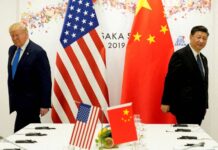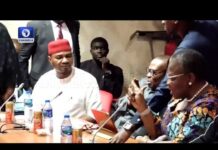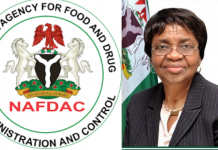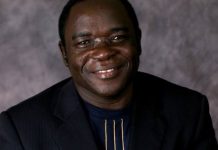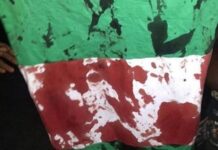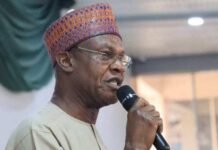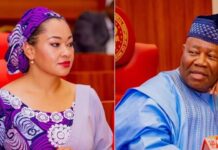Festus Adedayo
Just before genocide broke out in Rwanda in 1994, a broadcaster on the Radio Television Libre des Mille Collines (RTLM) had said: “Someone must…make them disappear for good…to wipe them from human memory…to exterminate the Tutsi from the surface of the earth.” That statement, among others, from that Kigali-based radio, which broadcast from 8 July, 1993, to 31 July, 1994, became the tinder that set Rwanda on fire. By this time next week, the 2023 Nigerian general elections would have been concluded. However, like the shrew – the asin – which leaves in its trails pungent and breath-ceasing smell, the elections, perhaps unwittingly, have endangered social cohesion among Nigerian ethnic groups and set the country’s unity back by almost a century.
RTLM broadcasters got enveloped in crude jokes and usage of offensive language that have today been said to have contributed significantly to the 1994 genocide. Alhough figures of the casualty are still being disputed, from 7 April to 9 July, 1994, a total of between 600,000 and 1,000,000 people were either macheted or shot to death during Rwanda’s inter-ethnic animosity. While the government claimed that 1,074,017 people were killed, 94% of whom it said were of Tutsi ethnic origin, Human Rights Watch said casualties were 507,000. In contrast, the Journal of Genocide Research, in a 2020 report, claimed that the official figure earlier given was not credible, situating it at between 500,000 to 600,000 deaths. What was however incontestable was that the genocide left thousands of widows, with many women raped to death and hundreds of them infected with HIV. Thousands of children also made up an approximate figure of 400,000 who became orphans.
The radio was so oblivious of how it was leading the country to a graveyard. Only 1.52% of its airtime was dedicated to news and on the contrary, a huge 66.29% of the airtime saw its broadcasters venting incendiary commentary. The radio broadcast, mainly anti-Tutsi propaganda during this period, just as it characterised Tutsi as dangerous enemies of the people whose aim was to hijack political power and elbow Hutus out of power. Almost on a daily basis, RTLM amplified ethnic and political divisions. One of the most notorious profiling it made was labeling the Tutsi as inyenzi – non-human pests or cockroaches, which must be wiped out for their irritancy. Two hundred and fifty-two broadcasts by RTLM called for Hutus to machete Tutsis to death.
Nigeria is unwittingly going down this cadavers-full road. Its own RTLM are social media ethnic irredentists who have no idea of what it means to fight war. These cyber warriors get reinforced by notable leaders in the country who fuel ethnic politics. Can you notice any dissimilarity between RTLM’s “making them disappear for good” and a Nigerian leader calling for the “throwing of an ethnic group inside the lagoon,” so that they can be feasted upon by sharks?
Rwanda of 1994 is an African sore thumb that hangs out as an eerie lesson for every ethnicity under the human race to avoid. It describes in short sentences how hatred-laced speech and sporadic threats of violence can effectively help to spread genocidal prejudice across the length and breadth of society. Today in Nigeria, politics and politicians have groomed a deeply divided Nigeria, whose divisiveness spans over a century. This is fuelled by extremist ethnic, political views and divisions that openly and mutually preach hatred and violence. We are almost arriving at that bitter Rwandan intersection.
Rwanda, pre-genocide had a lot of historical similarity with Nigeria, especially domination history. In a journal article entitled Prejudice, Crisis and Genocide in Rwanda, published in 1997 by African Studies Association and written by Peter Uvin, the author asked, in a pathetic evocation of our humanity, “how do situations come about in which people massively participate in brutal violence against their neighbors who have not harmed them?”
Today, Nigerians may need to ask themselves same question that Uvin asked. The greatest culprits of this widespread seeds of hatred and discord are the Yoruba and Igbo of southern Nigeria. Though mutually historically suspicious of each other since the 1950s, basing this suspicion on historic claims of betrayals that are at best mythic, the 2023 elections have far worsened this divisiveness, widening the crevices beyond tolerable level.
In tracing the history of Rwanda, which I said shares similarity with Nigeria’s, Uvin submitted that, before the advent of colonisation, a vast part of Rwanda was a monarchy dominated by a cattle-rearing ethnic group called the Tutsi. Fleeing famine and draught, the Tutsi arrived Rwanda from the North in the 15th and 16th centuries. They met an agrarian people called the Hutus, who themselves immigrated to this fertile land some centuries earlier from Central Africa. The two of them were predated by inhabitants called the Twa, who were about 1% of the population and noted for pottery and hunting. The three groups were further joined, approximately a century ago, by an ethnic group called the Bazungu, descendants from central Europe who conquered Rwanda by force of occupation. They were “whites,” had an exclusive lifestyle and constituted about 1% of the population of Rwanda. They were however wealthy, owning sizeable shares of Rwanda’s wealth.
These ethnicities integrated over the years, speaking same language, believing in same God, sharing same culture and living side by side without rancour. Some ethnographers, on account of this, say that Rwanda had a single ethnic group and that no country in the world had this uniqueness. Sharing different ethnicities, they nevertheless possessed same characteristics. Their cohabitation made it difficult to distinguish between them, so much that, by the 19th century, after they had lived together for hundreds of years and intermarrying in the process, they became so integrated that the only way to categorize them was by their occupations. One was that, anyone who had a sizable herd of cattle was Tutsi.
This unity was not to last for long. The Bazungu supported a Tutsi monarchy that dominated the others. The Tutsi kings were infamous for imposing taxes and ordering obligatory cash crops as means of payment of taxes, foisting on the people very cruel legislation and forced labor. When the Belgian colonizers came, they reinforced this by promoting the Tutsi hegemony. As powerholders, Tutsi commanded the top echelon of society. At the end of the 1950s and the beginning of the 1960s, this Tutsi rule was overthrown by some educated Hutu who got schooled in Catholic schools after the Second World War. This radically altered and reordered the Rwandan political space. The two Hutu-led post-Independence regimes that came thereafter, under Gregoire Kayibanda of the First Republic, between1962-73; and the Second Republic, between 1973-1994 under General Juvenal Habyarimana, both sowed the seed that culminated in the genocide of 1994.
Like Rwanda, Nigeria has also had a history of domination by the Hausa-Fulani. I went into this long Rwandan history for two reasons; one to show that as Rome was not built in a day, it was not destroyed in a day either; and also, to show that unless Nigerians delink the history of hate and violence from their mindset today, the resultant effects can be cataclysmic. In doing this, I will quote generously from a piece I did on 6 November, 2022, entitled “The abduction of Pa Reuben Fasoranti.” With it, I intend to back my claim that historical and social roots can be located as responsible for the ethnic prejudice among Yoruba and Igbo today.
This mutual hatred didn’t start today. Two narratives feed its trough. The first was Nnamdi Azikiwe of the National Council of Nigeria and the Cameroons’ (NCNC) attempt to become the first Premier of the Western Region. Before then, tribal tension in the Nigerian Youth Movement (NYM) had constituted a huge centre of distraction to the two ethnic groups.
Azikiwe didn’t hide his disdain for the Egbe Omo Oduduwa and its leaders. Indeed, the Egbe had not been formally inaugurated by the time Azikiwe’s NCNC, in December 1947, sponsored protest demonstrations against it, using the editor of the Pilot, F. O. Coker, as its peg. Zik and his party, the NCNC, went on to form the Yoruba Federal Union (YFU) as a counterpoise to and as such, weaken the Egbe. This was at a time of growing solidarity among the Yoruba. Zik and his crew launched the YFU on 12 June, 1948, at Glover Hall, Lagos but they were so tactless as to make the speakers at the inauguration be Azikiwe himself, Mbonu Ojike, a known Zik apostle and columnist in the Pilot, as well as Oged Macaulay, a known Zik ally. The YFU however suffered the fate of all politically concocted contrivances – it faded out.
The second point of antagonism between Yoruba and Igbo was Zik and Obafemi Awolowo’s struggle for the control of the Western Region. While the NCNC was founded in 1944 by foremost nationalist and Yoruba, Herbert Macaulay, who became its first president, Azikiwe was its first secretary. At Macaulay’s death, the mantel fell on Zik to lead the party. However, Zik’s usage of the Pilot to situate the Igbo ahead of other ethnic groups infuriated the Yoruba who walked out of him at the London conference.





